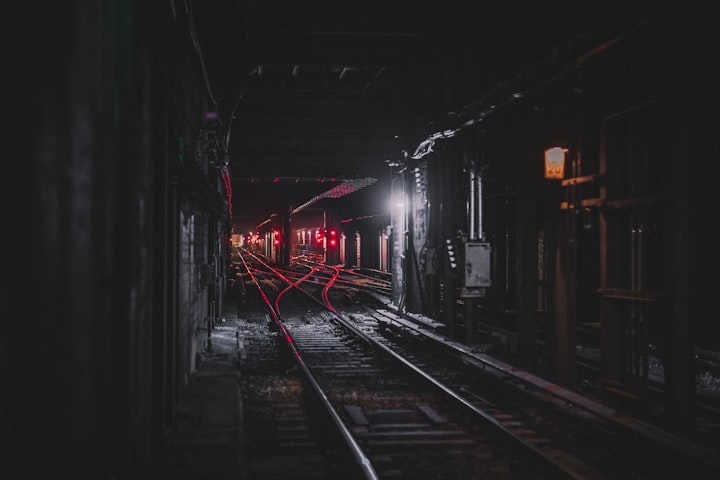Top 3 Uniquely Japanese Arts
Japanese Art
By Dipayan BiswasPublished about a year ago • 3 min read
Like
Share

Photo by Birmingham Museums Trust on Unsplash
- Ikebana, also known as kado or the way of flowers, is a traditional Japanese art form that involves the arrangement of flowers, branches, leaves, and other natural materials in a vase or other container. The practice of ikebana dates back to the 7th century and has evolved over time to include various styles and techniques.
Ikebana emphasizes balance and harmony in the arrangement, with each element chosen and placed to create a sense of movement and flow. The basic elements of an ikebana arrangement are the shin (formal or spiritual), the soe (informal or natural), and the hikae (line or accent). Shin is the central element, and it is usually the tallest and most prominent in the arrangement. Soe is the secondary element, and it is usually shorter and more naturalistic. The hikae is the accent, and it is usually smaller and used to add interest or contrast to the arrangement.
Ikebana also has various schools of styles, The Sogetsu school, Ikenobo, Ohara, and Misho are some popular styles. Each style has its own techniques and principles, but all share the same goal of creating beauty and harmony through the arrangement of flowers.
Ikebana is often associated with Zen Buddhism and is believed to help practitioners achieve a sense of inner peace and tranquility. Many Japanese homes have an ikebana vase or tokonoma (alcove) where seasonal flowers and branches are arranged for display. Ikebana is also a popular form of entertainment, with competitions and demonstrations held regularly throughout Japan and around the world. - Sumi-e, also known as ink painting or brush painting, is a traditional Japanese art form that involves the use of black ink and various brushes to create illustrations and calligraphy. Sumi-e paintings often feature landscapes, nature, and other subjects that are inspired by Chinese and Japanese art and culture.
The basic techniques of sumi-e involve the use of a brush to apply ink to paper in a controlled and expressive manner. The brushstrokes used in sumi-e are often bold and dramatic, with a focus on capturing the essence of the subject rather than its detailed appearance.
One of the key principles of sumi-e is the use of minimalism and simplicity to convey the maximum amount of meaning and emotion. Many sumi-e paintings have a stark and unadorned quality that is meant to reflect the natural and spiritual essence of the subject.
Sumi-e is closely related to calligraphy, and the two art forms often share similar tools and techniques. Many sumi-e artists also practice calligraphy and use the same brush and ink to create both written characters and illustrations.
The origins of Sumi-e can be traced back to China, but it's believed to have been introduced to Japan in the 7th century by Chinese monks. It evolved in Japan over time and became an important form of expression in the Zen Buddhism.
Sumi-e is a meditative and spiritual practice that is believed to help practitioners achieve a sense of inner peace and balance. Sumi-e painting is still practised today by many artists and enthusiasts, both in Japan and around the world. - Ukiyo-e is a traditional Japanese art form that involves the use of woodblock prints to create illustrations and artwork. The word "ukiyo-e" literally means "pictures of the floating world," and refers to the urban lifestyle and culture of Edo-period Japan (1603-1868).
Ukiyo-e prints were popular among the middle and lower classes of society and often depicted scenes from everyday life, such as actors, courtesans, and landscapes. The artists who created these prints were often considered to be part of the ukiyo, or "floating world," which was a term used to describe the transient and pleasure-seeking aspects of Edo-period culture.
The process of creating ukiyo-e prints is complex and requires several steps. First, an artist creates a detailed sketch or painting of the desired image. Next, a professional carver cuts the design into a wooden block, which is then used to print the image onto paper. The block can be used to print multiple copies of the same image, and each print will be slightly different due to the nature of the printing process.
Ukiyo-e prints are known for their bold, flat colors and dynamic compositions. Artists often used a limited color palette and bold black lines to create a sense of movement and energy in the image. The technique of using multiple blocks to print different colors is also a characteristic feature of Ukiyo-e prints.
Ukiyo-e prints were particularly popular during the Edo period, but the tradition continued even after the Meiji restoration of 1868. However, after the Meiji period, Ukiyo-e went into decline and eventually became a historical art form. Today, Ukiyo-e prints are highly valued by collectors and art enthusiasts around the world, and are considered an important part of Japanese cultural heritage.






Comments
There are no comments for this story
Be the first to respond and start the conversation.